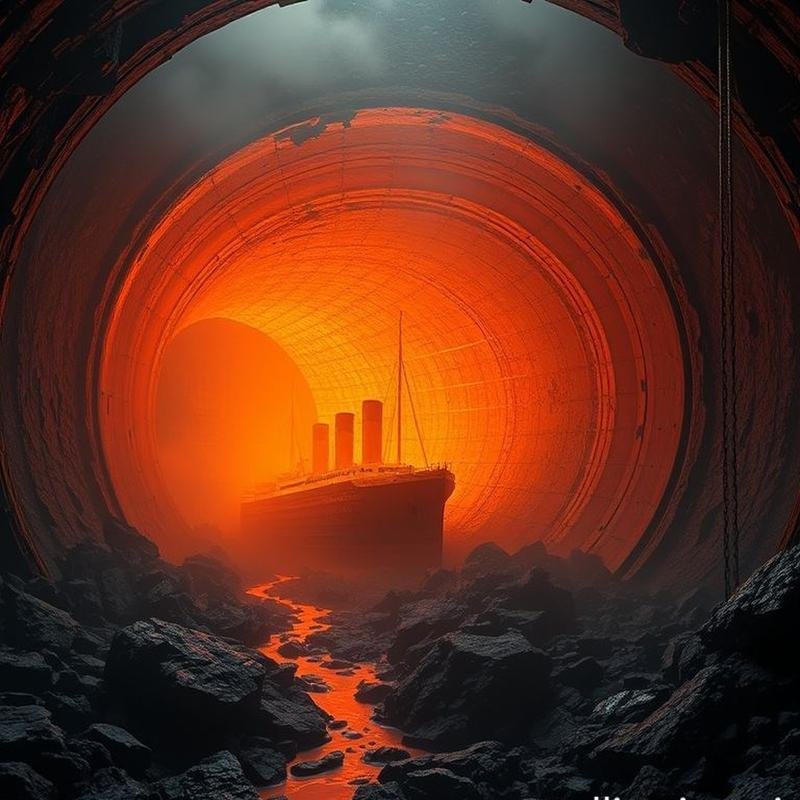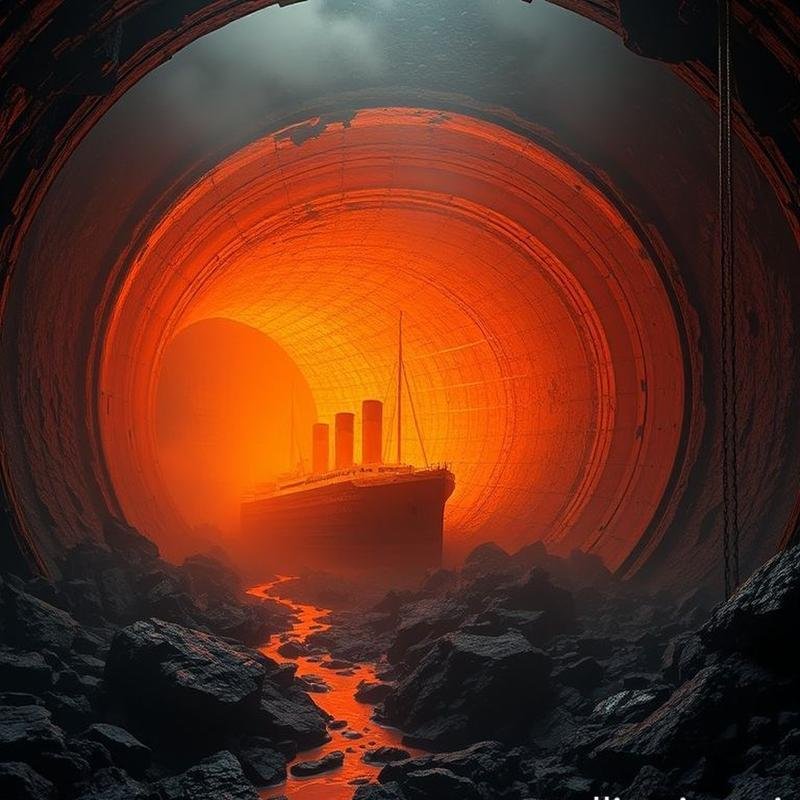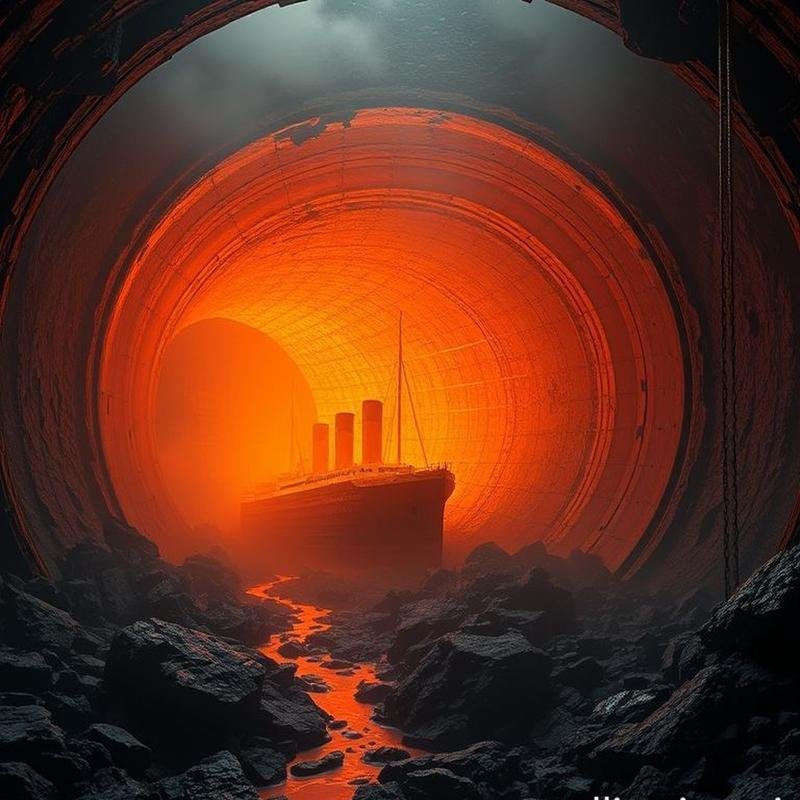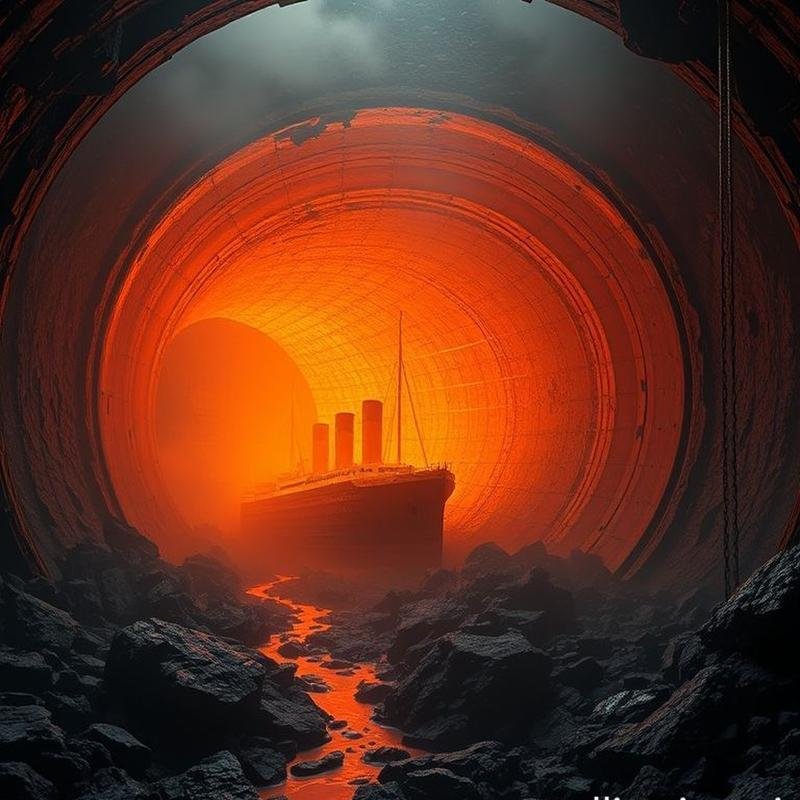Titanic: Unveiling the Shocking Truth! Was Fire or Iceberg the Primary Cause?

Titanic: Fire or Iceberg? Unveiling the Real Cause
The iceberg strike was merely the final, tragic act in a drama that unfolded long before the Titanic’s departure. A concealed fire, burning for weeks beneath the deck, critically compromised the hull’s structural integrity. In this episode, we reveal compelling evidence suggesting the iceberg was not the sole cause of the disaster, but rather the catalyst that ignited a chain reaction of negligence and avarice, ultimately sinking a legend. We will examine ship’s logs, poignant survivor accounts, and expert analyses to construct a chilling narrative of how a catastrophic decision transformed a voyage of dreams into an enduring nightmare.
Before we present the incriminating evidence, share your hypotheses regarding the fire’s impact in the comments section. And to fully uncover these horrific truths, subscribe to our documentary channel.
The Forgotten Fire: A Latent Threat
The forgotten fire began even before the Titanic left Southampton. Ten days prior to departure, a clandestine fire erupted in coal bunker number 6. This was not simply an unfortunate incident, but a latent threat to the ship’s overall safety. The cause was spontaneous combustion of coal, a prevalent issue at the time, particularly with the use of bituminous coal, known for its propensity for self-ignition. Firefighters toiled relentlessly to extinguish the blaze, but the persistent flames continued to smolder. Instead of delaying the voyage and risking damage to the White Star Line’s reputation, a fateful decision was made to remove the burning coal and transfer it to the furnaces, effectively fueling a destructive force from within.
Compromised Integrity: A Recipe for Disaster
However, the true catastrophe was yet to unfold. The intense heat generated by the fire, which persisted for weeks, is believed to have significantly weakened the Titanic’s steel hull, particularly in the area adjacent to the coal bunker. This increased vulnerability made the ship more susceptible to hazards, transforming a potential collision with an iceberg into a near certainty of disaster. Compounding this, the White Star Line deliberately concealed the fire from passengers and the public, shamefully minimizing the risk as if the lives of thousands were inconsequential.
Desperate Measures: A Futile Effort
For three weeks, the flames consumed the ship’s core, devouring the coal within. Basic water hoses, barely adequate for domestic fires, were the only means of combating the inferno. Workers desperately removed burning coal by hand, discarding it into the sea, a seemingly futile effort. While 600 tons of coal were removed with considerable difficulty, the remaining coal continued to fuel the blaze. Furthermore, the escalating heat subtly permeated the steel, altering its molecular structure and dangerously reducing its strength. There were no advanced chemicals, modern extinguishing foam, or innovative solutions available, only water, limited manpower, and growing despair. Senior officers, including the chief engineer, were fully aware of the situation. Did they recklessly underestimate the potential consequences? Did they prioritize speed over safety, jeopardizing the lives of innocent passengers to maintain the schedule?
Slow-Acting Poison: The Steel’s Demise
While the arduous firefighting efforts continued, another, more insidious threat was developing below deck. The intense heat emanating from the fire in coal bunker number 6 was not only a threat to the coal supply, but also acted as a slow-acting poison on the steel hull. Subsequent investigations revealed alarming data. In some areas, temperatures reached over 500 degrees Celsius. This sustained heat exposure for over three weeks significantly compromised the steel’s integrity. Metallurgist Dr. Tim Foecke explains that such extreme heat can reduce the steel’s impact resistance by as much as 75%. This meant that the steel, intended to protect the ship and its passengers, became brittle and weak, akin to glass that could shatter upon impact. Moreover, analyses revealed that the steel used in the Titanic’s construction, particularly the plates near the fire’s epicenter, contained a dangerously high sulfur content, making it more susceptible to cracking and shattering in cold water. This combination of heat-weakened steel and increased brittleness in icy water created a fatal flaw within the ship, unknown to the passengers and concealed from the public. The White Star Line chose to suppress the truth.
The Iceberg: The Final Blow
Was the collision with the iceberg merely the final blow to a ship already compromised? In reality, the iceberg was the coup de grâce to a vessel that was slowly succumbing to internal damage. Desperate messages from Chief Engineer Joseph Bell reveal his deep concern as he struggled to extinguish the fire. “We are working hard to put out this damned fire,” Bell wrote to his wife before sailing, seemingly foreshadowing the impending disaster. But were these concerns heeded? Did the White Star Line truly grasp the severity of the situation? The unfortunate truth is that this fire, which burned for weeks prior to departure, was not simply an accident, but a ticking time bomb that gradually weakened the ship’s steel hull. Imagine the constant heat, exceeding hundreds of degrees, permeating the steel and transforming it into a brittle, glass-like material. It is estimated that steel can lose up to 75% of its strength when exposed to such prolonged heat. Therefore, what if the Titanic had collided with the iceberg in a different area of the hull? What if the steel in that area had not been compromised to the same extent? Could the ship have survived? Perhaps… but fate intervened.
Warnings Ignored: A Deliberate Disregard
The fire originated in coal bunker number 6, three weeks before the Titanic encountered the frigid waters of the Atlantic. Three weeks of intense flames, consuming coal and weakening the steel structure. The firefighters, who witnessed the impending danger firsthand, voiced their concerns in the face of deliberate disregard. They spoke of the unbearable heat, the suffocating smoke that permeated the corridors, and the metal that changed color, buckled, and cracked under the intense heat. “Sir, this steel will not hold!” one of them reportedly exclaimed, but Chief Engineer Joseph Bell dismissed their warnings. “Put out the fire, that’s all you have to do!” Orders were issued, and concerns were suppressed. Time constraints and potential financial losses took precedence over safety. Imagine these firefighters, working tirelessly against the flames, while their confidence in the ship’s integrity diminished. Black smoke billowed from between the glowing steel plates, the acrid smell of burning permeated every corner, and the unsuspecting passengers prepared for their voyage, unaware of the impending danger.
Profits Over Lives: A Dark Conspiracy?
While firefighters battled the blaze, suspicions arose regarding the White Star Line’s true motives. Did profits outweigh the value of passenger lives? Did they conceal a looming financial crisis behind a veil of deception? Survivor testimonies fueled the controversy. Reports of smoke emanating from unusual locations were either ignored or downplayed. Why this blatant disregard? Were there explicit instructions to suppress any evidence of the impending disaster? Desperate attempts to extinguish the fire had dire consequences for the ship’s course and speed, painting a grim picture of a situation spiraling out of control. The issue of insurance further complicates the narrative. Reports suggest that the insurance company refused to cover losses resulting from the fire, placing the White Star Line in a precarious financial position. Did this influence their decision to conceal the truth? Were they willing to gamble with innocent lives to avoid bankruptcy? These questions resonate as we delve into this dark chapter of the Titanic’s history. Was the iceberg solely responsible for the sinking? Or was the forgotten fire a hidden accomplice in this tragedy, remaining in the shadows for so long?
Expert Analysis: A Radical Transformation
Naval architect James Dillard challenges the official narrative, shedding light on previously neglected aspects. “The fire was a ticking time bomb. Temperatures reaching a thousand degrees Celsius are sufficient to weaken steel, potentially by as much as seventy-five percent in certain areas. This is not minor damage, but a radical transformation in the ship’s ability to withstand impacts, rendering it as fragile as paper.” Photographs taken before departure reveal traces of black smoke staining the hull, silent evidence of the battle fought in the coal bunker, hidden from the passengers. Reports suggest a slight alteration in course, perhaps a desperate attempt to reach New York quickly and extinguish the fire away from public scrutiny, a desperate attempt to conceal a looming disaster. Senator William Alden Smith, who led the American investigation, uncovered a pattern of negligence and indifference. But have we truly learned from this tragedy? Have we absorbed the lessons offered by the Titanic’s sacrifice?
Lessons Learned: Enhancing Maritime Safety
Following that fateful night, global efforts were undertaken to enhance maritime safety, culminating in the International Convention for the Safety of Life at Sea (SOLAS) in 1914, the cornerstone of
Video Evidence
Image Gallery









